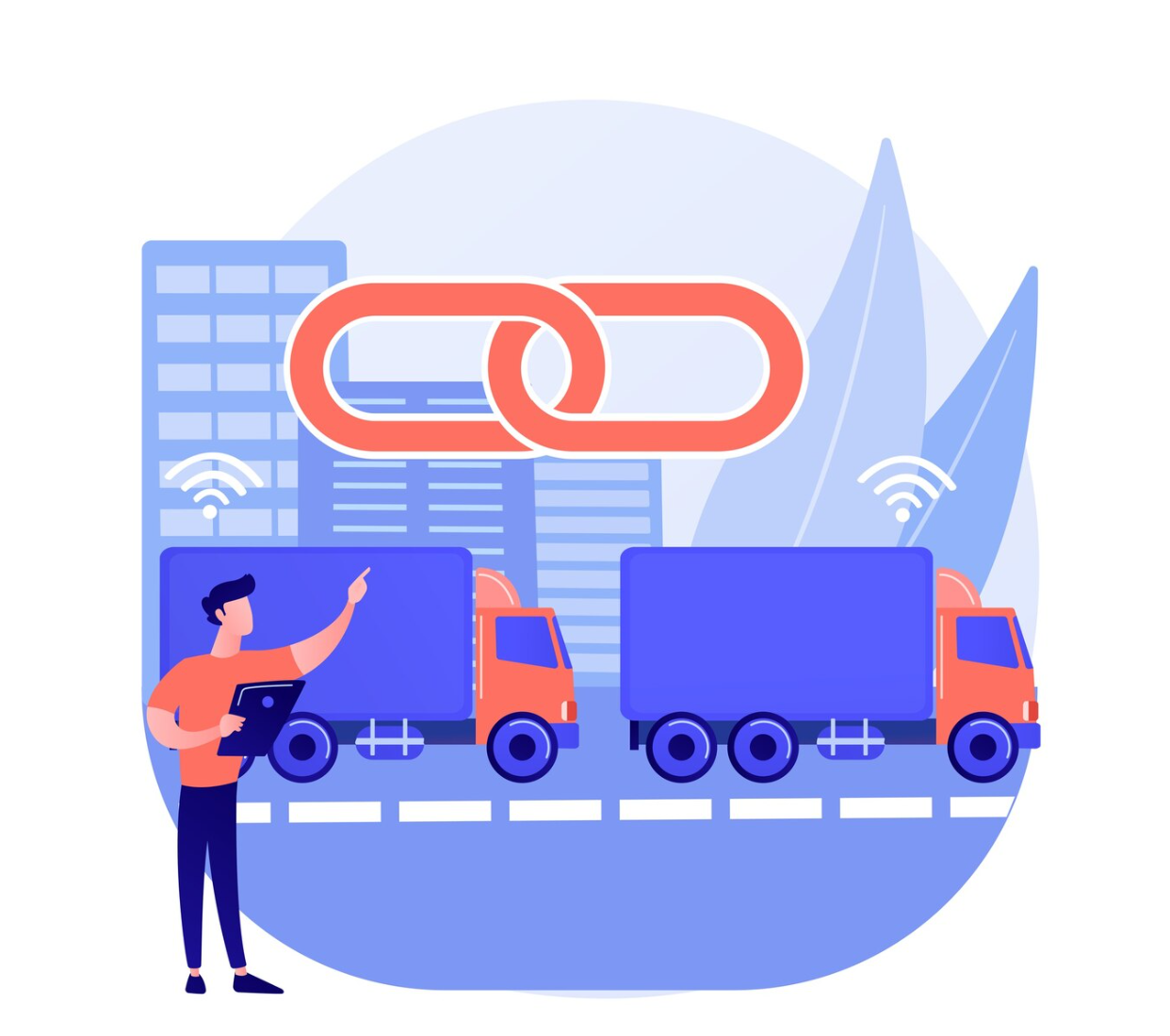The Role of AI in Shaping Modern E-Commerce
Image source: Freepik
You’re shopping online more than ever, and AI is everywhere in this space. It helps you find products you like with smart recommendations. It knows what you might want before you do. AI chatbots answer your questions fast, making your shopping smoother. Prices change based on AI’s analysis, aiming to match your budget. It even helps deliver packages on time. But how else is AI changing your e-commerce experience? There are more ways it’s working behind the scenes. Let’s explore them further.
Transforming Customer Experience
The revolution in customer experience is reshaping e-commerce. You see it every time you shop online. Websites are getting smarter and more intuitive. Seamless navigation is no longer a luxury; it’s a necessity. You can find what you want without any hassle. Sites guide you like a friendly shop assistant, making shopping simple and enjoyable.
Immersive experiences are now part of the package. You’re not just looking at products; you’re experiencing them. 360-degree views, videos, and virtual try-ons are becoming common. These tools help you feel connected to the product, almost as if you’re touching it. This makes your shopping journey more engaging and fun.
Emotional engagement is also key. E-commerce platforms are focusing on building a connection with you. They understand your needs and emotions. They use visuals and stories to captivate your interest. You feel more than just a transaction; you feel valued. This emotional tie encourages you to return and shop again.
In this evolving landscape, your experience is at the center. E-commerce isn’t just about buying things. It’s about creating a journey that you enjoy and remember.
Personalization in E-Commerce
AI transforms online shopping by offering tailored product suggestions that feel personal. Instead of random items, you see products based on your interests and habits. Here’s how it works:
- Understanding Your Behavior
- Tracks what you search for, click, and buy.
- Analyzes patterns to identify your preferences.
- Tailored Suggestions
- Matches products to your browsing and purchase history.
- Refines recommendations over time as the system learns more about your tastes.
- Improving Shopping Experiences
- Reduces time spent searching by showing relevant products.
- Helps you discover items that align with your needs and interests.
- Driving Store Success
- Encourages more purchases by aligning suggestions with customer preferences.
- Supports businesses in creating a better shopping experience for their audience.
AI simplifies the process, connecting you with items you’re more likely to enjoy, while making online shopping more efficient and satisfying.
AI-Powered Product Recommendations
Random product suggestions when you shop online are product of AI andbehind those suggestions is AI technology. It looks at user behavior analysis to understand what you like. The AI tracks what you click, search, and buy. Then, recommendation algorithms use this data. They figure out what products you might enjoy next.
These recommendations aren’t just for fun. They’re a big part of sales conversion optimization. When you see products you like, you’re more likely to buy them. This boosts sales for online stores. It’s a win-win. You find what you want. The store increases its sales.
As you browse, the system learns more about you. It adjusts its suggestions. It becomes more accurate over time. This makes your shopping experience better. You’re not wasting time on things that don’t interest you.
The process is simple for you, but complex behind the scenes. AI does the heavy lifting. It makes sense of all the data. It guarantees you see items that match your tastes.
Dynamic Pricing Strategies
Imagine getting the best deal on your favorite sneakers. Thanks to dynamic pricing strategies, that dream is now possible. Businesses adjust prices based on demand, competition, and other factors. You might wonder how they do it. AI plays a huge role here. It uses competitive analysis tools to compare prices with other stores. This way, you get the best offer without spending hours searching.
Another tool is price elasticity modeling. This helps businesses understand how sensitive you’re to price changes. If prices drop, will you buy more? If prices rise, will you buy less? AI analyzes this data and helps companies set the perfect price. This guarantees they maximize sales while keeping you happy.
Real time adjustments are key. Imagine you’re shopping late at night. While you’re browsing, the price might change. AI monitors market changes and updates prices instantly. This guarantees you always see the most competitive price.
You don’t have to wait for sales or compare dozens of websites. With AI-driven dynamic pricing, you get great deals effortlessly. Enjoy shopping smarter and saving more with AI’s help in modern e-commerce.
Chatbots and Virtual Assistants

Image source: Freepik
Chatbots and virtual assistants are transforming how you shop online. They make your shopping experience smoother and more enjoyable. These AI tools have smart conversations with you. They help you find products faster. You can ask questions and get instant answers. No more waiting for replies. This keeps your shopping journey stress-free.
AI conversations boost customer engagement. When you’re browsing, these chatbots pop up. They offer help and suggest items you might like. This makes virtual shopping feel like a personal experience. You don’t need to search aimlessly. The chatbot guides you. It knows your preferences and tailors suggestions to match your taste.
Virtual assistants also remember your past choices. They learn what you like. Next time you shop, they suggest similar products. This saves you time and effort. You feel understood and valued as a customer. The AI remembers details about your favorite brands or sizes.
With chatbots and virtual assistants, online shopping is simple and effective. You feel like you’re getting personal attention in a busy digital world. These AI tools are changing e-commerce. They’re making it more interactive and user-friendly for you.
Enhancing Customer Service
How has AI transformed customer service in e-commerce? It’s made it faster and smarter. You see, AI can handle customer requests instantly. This means you get help right when you need it. No more waiting in long queues.
AI uses feedback loops to learn from each interaction. With each customer query, it gets better. It adapts and improves. This makes for a smoother experience.
AI also offers proactive support. It can predict problems before they occur. For example, if an order is delayed, AI might notify you before you even notice. It can suggest solutions too. This keeps customers happy and reduces frustration. You feel valued and understood.
Then there’s empathy algorithms. These are special AI tools. They help the system understand your feelings. If you’re upset, the AI can respond with care. It tries to solve your problem with a human touch. This builds trust. You feel like the company really cares about you.
In short, AI enhances customer service by being fast, predictive, and empathetic. It guarantees you get the help you need, when you need it, with a touch of human understanding. E-commerce is better for it.
Predictive Analytics in Sales
With the rise of predictive analytics, sales in e-commerce are getting a major boost. You’re now able to understand your customers better. Sales prediction models help you forecast future sales trends. They analyze past sales data to predict what products your customers will buy. This helps you plan better and make informed decisions.
Consumer behavior analytics is another tool you can use. It observes how your customers interact with your online store. By understanding their behavior, you can tailor your marketing strategies. You’ll know what products interest them and when they’re likely to make a purchase. This insight improves your sales conversion rates.
Inventory turnover analysis is essential, too. It helps you track how quickly your products sell. By knowing this, you can manage your stock effectively. You won’t overstock or understock items. This guarantees you always have the right products available for your customers.
Inventory Management Optimization
Understanding your customers and predicting sales trends is only half the battle. You also need to manage your inventory efficiently. This is where AI can help. With inventory tracking solutions, you can keep an eye on stock levels in real-time. You won’t have to manually count items or guess what’s in your warehouse. AI tools can show you exactly what you have at any moment.
Stock replenishment automation takes it a step further. It helps you know when to order more products. AI can predict when you’re running low and automatically place orders. This means you won’t run out of popular items, and you won’t overstock either.
Warehouse optimization techniques are another great benefit. AI can organize your warehouse for you. It figures out the best way to store items so you can find them quickly. This saves time and makes your staff more efficient.
In short, AI helps you manage inventory better. It’s like having a smart assistant that makes sure everything is in the right place at the right time.
Streamlining Supply Chains
Image source: Freepik
Efficient supply chains are essential for any e-commerce business. They guarantee products get to your customers quickly.
AI plays a big role in supply chain optimization. It helps you predict demand more accurately. With AI, you can track inventory in real-time. This means you know exactly what you have and what you need to order. Inventory tracking reduces waste and lowers costs.
AI also helps with logistics automation. It finds the fastest and cheapest shipping routes. This saves you time and money. Your customers get their orders faster.
Logistics automation can also predict delivery times. It keeps your customers informed.
AI tools make it easier to manage suppliers too. They help you choose the best partners. This guarantees you get quality products at good prices.
AI analyzes data from every part of the supply chain. It identifies problems before they become big issues. This keeps your operations running smoothly.
Fraud Detection and Prevention
In the world of e-commerce, fraud can be a major headache. You deal with payment scams, fake accounts, and identity theft. It’s essential to protect your business and customers. This is where AI steps in.
AI offers powerful fraud detection strategies to help you spot unusual activities. These strategies analyze patterns in customer behavior. They look for red flags in real-time.
Machine learning algorithms play a big role here. They learn from past data to predict and prevent fraud. As they process more transactions, they get smarter. They can identify even the slightest anomalies. With these algorithms, you can reduce false positives, catching real threats faster.
Prevention technologies also keep your business safe. They work alongside AI to block suspicious actions. For instance, biometric authentication checks if a user is who they claim to be. It adds an extra layer of security.
Improving Search Functionality

Image source: Freepik
In e-commerce, a smooth search experience can make or break customer satisfaction. When shoppers find what they need quickly, they’re more likely to complete a purchase and return in the future. Artificial intelligence is transforming search functionality in three major ways:
Semantic Search
-
- AI understands the meaning behind search terms, not just exact matches.
- Connects related terms, like “running shoes” and “sneakers,” for more accurate results.
- Helps customers find what they’re looking for faster, even with vague descriptions.
Natural Language Processing (NLP)
-
- Interprets conversational queries like “show me red dresses under $50.”
- Delivers results tailored to specific requests, making shopping more intuitive.
- Enhances the overall user experience by bridging the gap between how customers speak and how search engines respond.
Image Recognition
-
- Lets shoppers search by uploading photos instead of typing.
- Matches images to similar products, perfect for hard-to-describe items.
- Opens new possibilities for discovery, especially in fashion and home decor.
Voice Commerce Technologies
AI not only enhances search functionality, but it also powers voice commerce technologies in e-commerce. You can now use your voice to shop online. Voice recognition advancements make this possible. They’re more accurate than ever. You can speak naturally and the technology understands you. This is thanks to AI.
Conversational interfaces play a big role too. They let you interact with online stores as if you’re speaking to a person. You can ask questions about products. You can check prices or availability. The system responds quickly with the information you need. This makes shopping easier and more enjoyable.
AI also streamlines the checkout process. It offers a seamless checkout experience. You can complete purchases without typing or clicking. Just say what you want. The system handles the rest. This saves you time and effort.
Voice commerce is growing fast. More people are using smart speakers and phones to shop. Businesses need to adapt. They should invest in voice technologies. It improves customer experience. It also drives sales.
Voice commerce technologies are here to stay. They’re changing how you shop online. Embrace this change and enjoy the convenience it brings.
Visual Search Innovations
Visual search is changing how you find products online. You no longer need to type endless words into a search bar. Instead, you can upload a photo of what you want. Thanks to image recognition advancements, the system understands your picture. It identifies the product and shows you similar items instantly.
This technology is smart. It remembers your visual styling preferences. If you like a certain color or design, it learns from that. The more you use it, the better it gets at suggesting things you’ll love. You’ll find what you’re looking for faster and easier.
Stores love this too. Visual search boosts user engagement metrics. When you find what you want quickly, you’re more likely to buy. This means more sales for businesses. And since you’re happy, you’ll probably return to shop again.
Visual search is a win-win. It makes shopping online fun and easy for you. Companies see more sales and happier customers. With these image recognition advancements, the shopping experience is getting better every day.
AI in Marketing Automation
Image source: Freepik
While visual search makes online shopping a breeze, marketing automation with AI takes things a step further. You can personalize your marketing like never before. AI driven segmentation strategies help you target the right audience. It divides your customers into smaller groups. You can send tailored messages to each group. This boosts engagement and sales.
Automated campaign optimization is another benefit. AI can adjust your marketing campaigns in real-time. It looks at data and finds what works best. You don’t need to guess anymore. You save time and money. Your campaigns become more effective without extra effort.
Machine learning insights give you a deeper understanding of your customers. AI learns from past interactions. It predicts what your customers might like next. You can create offers and promotions that are hard to resist. It feels like you know your customers personally.
With AI, you’re not just guessing; you’re making informed decisions. Your marketing becomes smarter and more efficient. You can focus on growing your business.
AI in marketing automation isn’t just a tool. It’s a partner that helps you succeed in the competitive e-commerce world.
Customer Data Insights
Data is the lifeblood of modern e-commerce. It’s what helps you understand your customers better. By analyzing customer behavior, you can learn what your customers like and dislike. This helps you make better decisions. You can personalize their shopping experience and offer products they want. This boosts sales and keeps customers happy.
However, with all the data, there are concerns. Data privacy concerns are important. Customers share a lot of personal information. It’s your job to protect it. You need to be transparent about how you use their data. Make sure you have strong security measures in place. This builds trust with your customers.
Ethical data usage is also key. It’s not just about following the law. It’s about doing what’s right. Use data to improve the customer experience, not to exploit them. Always get consent before collecting data. Be clear about how you’ll use it. Respect your customers’ privacy.
In the end, customer data insights are powerful. They can transform your e-commerce business. But, you must handle data responsibly. When you do, you gain loyal customers and a successful business. Your commitment to ethical data usage and privacy will set you apart.
Sentiment Analysis Utilization
Understanding customer sentiments is another powerful tool in e-commerce. It helps you know what your customers think and feel about your brand. This is where sentiment analysis comes in. By using AI, you can explore customer feedback analysis. You can quickly see if people are happy or upset with your products or services. This way, you can address issues faster.
Brand sentiment tracking is essential for your business. It lets you measure how people perceive your brand over time. With AI, you can track these sentiments across various channels. You’ll get a clear picture of your brand’s reputation. This helps you make informed decisions and improve your strategies.
Social media monitoring is another key aspect of sentiment analysis. People often share their thoughts on platforms like Twitter, Facebook, and Instagram. By keeping an eye on these, you can gather valuable insights.
AI tools can scan thousands of posts in seconds. You’ll understand trends and customer opinions without much effort.
Automated Content Creation
In the world of e-commerce, automated content creation is a game changer. You don’t have to spend hours writing or brainstorming. Automated writing tools do the heavy lifting for you. They help generate product descriptions, blog posts, and even social media updates. This way, you can focus on other important tasks.
These tools use AI copywriting techniques. They understand what’s appealing to your audience. They create content that’s engaging and relevant. This boosts your brand’s visibility and attracts more customers. You can trust these tools to maintain your brand’s voice and style.
Content strategy optimization is easier with AI. You can analyze what works and what doesn’t. Automated tools provide insights into customer preferences. They help you adjust your strategy quickly. This means you can stay ahead of trends and competitors. You don’t need to guess what content will succeed; the AI does it for you.
Incorporating AI into your e-commerce business saves time and resources. It guarantees your content is always fresh and on point.
Automated content tools are essential in today’s fast-paced market. Embrace them, and you’ll see the difference they make.
How AI is Changing Delivery and Logistics
Fast delivery has become a non-negotiable for online shoppers. Whether it’s a last-minute gift or everyday essentials, you expect your purchases to arrive quickly and reliably. Artificial intelligence is playing a critical role in meeting this demand, transforming logistics in remarkable ways.
Optimized Delivery Routes
-
- AI identifies the fastest paths for delivery trucks.
- Reduces travel time and fuel costs, enabling more deliveries per day.
- Helps you receive your orders sooner and with fewer delays.
Real-Time Tracking
-
- Lets you see exactly where your package is at any time.
- Alerts you to delays, giving you peace of mind.
- Builds trust by keeping the delivery process transparent.
Autonomous Delivery Solutions
-
- AI powers drones and robots for safe, efficient deliveries.
- Offers round-the-clock service, even for late-night or remote locations.
- Reduces dependency on human drivers, improving delivery speed.
Augmented Reality Shopping

Image source: Freepik
AI doesn’t just make deliveries faster; it changes how you shop, too. Imagine trying on clothes without leaving your home. Virtual fitting rooms let you do just that. You can see how a dress looks on you using your phone or computer. It’s easy and fun. You don’t have to deal with crowded stores anymore.
Augmented Reality (AR) makes shopping more exciting. It offers immersive experiences. You can see how furniture fits in your room. Just point your phone at the space. Instantly, the sofa or table appears right where you want it. It saves time and helps you make better choices.
Interactive catalogs are another cool feature. They show products in 3D. You can rotate items and see them from every angle. It’s almost like holding the product in your hands. This way, you know exactly what you’re buying.
AI and AR make online shopping more personal. You feel more connected to the products. You make decisions with confidence. No more guessing if something will fit or match. You get a real sense of size and style.
These tools make shopping smarter and more enjoyable for you.
AI-Driven Demand Forecasting
Imagine knowing what customers want before they even do. With AI-driven demand forecasting, you can. This technology helps you understand demand trends. You can see what products will be popular next. It’s like having a crystal ball for your business.
Sales forecasting becomes easier with AI. It looks at past sales data and predicts future trends. You don’t have to guess what’ll sell. AI does the hard work for you. It analyzes customer behavior and market conditions. With this information, you make better decisions.
Inventory predictions are a big part of this. AI helps you know how much stock to keep. You won’t have too much or too little. It reduces the risk of overstocking or running out. This means cost savings and happier customers.
AI-driven demand forecasting is a game-changer. It brings accuracy to your operations. You can prepare for the future with confidence. Adapting to demand trends guarantees you’re always one step ahead.
It’s not just about guessing right. It’s about using smart tools to drive success. Embrace AI and watch your e-commerce business grow. You’ll be ready for whatever the market demands.
Reducing Cart Abandonment
Shopping online is convenient, but many shoppers leave their carts without buying. It happens often. You’re browsing, adding items, then you abandon the cart. Why? Sometimes the checkout process is too complicated. You can use checkout optimization strategies to fix this. Make the process simple and fast. Reduce the number of steps needed to complete a purchase.
User experience enhancements are also essential. Guarantee your website is easy to navigate. Provide clear product descriptions and images. Offer customer reviews. This builds trust and encourages purchases. If customers can’t find what they need quickly, they’ll leave.
Payment gateway solutions play a big part too. Offer multiple payment options. Some people prefer credit cards, others like PayPal or digital wallets. Secure and reliable payment gateways make customers feel safe. They’re more likely to complete their purchase.
You should also consider sending reminders. If someone leaves items in their cart, send them an email. A small discount or free shipping offer can help seal the deal.
Enhancing Mobile Shopping
Mobile shopping’s on the rise, and you’ve got to keep up. Customers want fast, easy, and engaging shopping experiences. Mobile payment solutions are a big part of this. They let users pay quickly and securely, boosting satisfaction. If you don’t offer smooth payment options, you might lose customers.
Next, think about augmented reality integration. This tech adds a new layer to online shopping. It lets customers see products in their own space before buying. Imagine trying out a new sofa in your living room using your phone. It’s possible with augmented reality. This feature can make your store stand out and increase sales.
Another vital aspect is user interface enhancements. A well-designed interface makes it easy for users to find what they’re looking for. Keep menus simple and navigation intuitive. Users should complete purchases with minimal clicks. A cluttered interface can frustrate users and lead them to leave your site.
Incorporating these elements helps you create a better mobile shopping experience. It’s about making the process enjoyable and efficient. Stay ahead by adopting these technologies. Your customers will appreciate the effort, and your business can grow.
Keep evolving to meet their needs.
Sustainable E-Commerce Practices
As you enhance your mobile shopping experience, it’s important to contemplate how these improvements can align with sustainable e-commerce practices. Start by thinking about sustainable packaging solutions. Choose products that use packaging made from recycled materials. This reduces waste and helps the environment.
Look for companies committed to ethical sourcing practices. They guarantee fair treatment of workers and use resources responsibly. By supporting these businesses, you’re promoting better working conditions and sustainability.
Consider the carbon footprint of your purchases too. Some companies offer carbon footprint reduction programs. They might offset emissions by planting trees or investing in clean energy.
You can also reduce your own carbon footprint. Opt for digital receipts instead of paper. Choose slower shipping options that combine orders. This reduces the number of trips and emissions.
You can also make a difference by being mindful of returns. Return shipping adds to carbon emissions. So, check product details and reviews carefully before buying. This helps assure you won’t need to return items.
Future Trends and Innovations

Image source: Freepik
E-commerce is evolving quickly, reshaping how we shop online. Here are three trends that are setting the stage for what’s next:
Blockchain for Secure Shopping
-
-
- Improves payment security with fewer risks of fraud.
- Makes transactions faster, reducing delays at checkout.
- Offers a clear, trustworthy process for both shoppers and sellers.
-
Shopping on Social Media
-
-
- Lets you explore, review, and purchase products without leaving your apps.
- Helps businesses reach more people through social platforms.
- Makes online shopping more engaging and convenient.
-
Ethical AI in Retail
-
-
- Ensures fairness and protects customer data.
- Builds trust by respecting privacy and handling data responsibly.
- Promotes ethical use of AI to improve shopping experiences.
-
Final thoughts
You’ve seen how AI transforms e-commerce. It’s not just about cool tech; it’s about real results. Did you know 35% of Amazon’s revenue comes from AI-driven recommendations? This shows how powerful personalization can be. AI’s making shopping easier and more fun. It’s cutting costs and speeding up deliveries too. As e-commerce grows, AI will keep leading the way. So, embrace AI’s role in creating smarter, more efficient shopping experiences.




